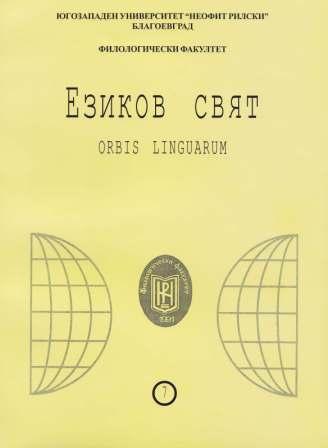ИЗУЧАВАНЕТО НА БЪЛГАРСКИ ЕЗИК ОТ ПОЛСКИ СТУДЕНТИ - МОТИВИ, ПРЕДИМСТВА, ПРОБЛЕМИ
LEARNING BULGARIAN BY POLISH STUDENTS – MOTIVES, ADVANTAGES AND PROBLEMS
Author(s): Bilyana Todorova, Sofiya MitsovaSubject(s): Language studies, Language and Literature Studies, Foreign languages learning, Philology
Published by: ЮГОЗАПАДЕН УНИВЕРСИТЕТ »НЕОФИТ РИЛСКИ«
Keywords: Bulgarian language; learning; Polish; Slavic languages; definite article; verbal system; lexical system; “false friends”
Summary/Abstract: The aim of the paper is to present why the Polish students at Maria Curie-Sklodowska University (UMSC, Lublin) choose to study Bulgarian. The research also includes an investigation of the advantages of learning a “small” Slavic language like Bulgarian and an analysis of the usual problems which the students encounter in the learning process. Thirteen students studying Bulgarian within the framework of the BA programme of Balkan Studies at UMCS participated in the research. They filled out a survey list with questions concerning their motivation and their opinion about the advantages of learning Bulgarian as well as the most difficult topics in Bulgarian grammar and lexicon. The results show that the motivation is usually a pragmatic one. However, most of the students have some emotional motives, too. As Bulgarian is both a Slavic and a Balkan language, it sounds familiar and exotic at the same time. Most of the students think that the lexical level is the easiest linguistic level to be learnt. Moreover, the majority of them report that the most difficult features of Bulgarian are the use of the definite article and the complicated verbal system. The so-called “false friends” are also problematic. Although the Bulgarian language uses the Cyrillic alphabet, most of the students do not think that writing in Bulgarian is difficult.
Journal: Езиков свят - Orbis Linguarum
- Issue Year: 2018
- Issue No: 2
- Page Range: 80-87
- Page Count: 8
- Language: Bulgarian

